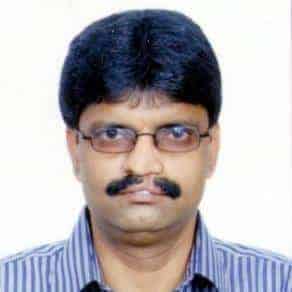
Few social reformers of 19th century India received as much attention, both in admiration and criticism, as Sir Syed Ahmad Khan (1817–1898) did. You can fill a whole library with his own books and books written on his life and works. And yet people continue to take a “fresh look” at the way Sir Syed impacted our society, literature, language and life.
Shafey Kidwai, a noted Urdu critic, Professor and Head, Department of Journalism at Aligarh Muslim University (AMU), is a diligent researcher. A substantial part of his waking hours goes into reading and researching. He is researching and writing books if he is not teaching, attending seminars or writing a regular column “Going Native” in The Hindu. His latest book “Sir Syed Ki Awwalin Sahafati Koshishen (Sir Syed’s Initial Journalistic Efforts) is an admirable effort to look into Sir Syed’s journalism with special reference to The Aligarh Institute Gazette he started in 1866. The book is important not just because it discusses the newspapers and periodicals where Sir Syed honed his skill as a fascinating writer; it is important also because it exposes the mistakes some of Sir Syed’s famous biographers and ardent commentators on his works committed. I am glad Kidwai’s diligent research, at Sir Syed section of the massive Maulana Azad Library at AMU, led him to the latches of many experts on Sir Syed, Altaf Huusain Hali, Ismail Panipati, Asghar Abbas, to name just three. Hali was among Sir Syed’s closest associates and a great admirer. Hali’s Hayat-e-Javed is among Sir Syed’s earliest biographies. Published in 1901, just three years after Sir Syed’s death in 1898, it is considered a Bible on Sir Syed. No writer after Hali who wrote on Sir Syed can claim he didn’t refer to Hayat-e-Javed because Hali had begun working on it in Sir Syed’s lifetime and gives great details of his life. Yet Kidwai’s points out to a fallacy in Hali’s statement that The Aligarh Institute Gazette was a bilingual (in Urdu and English). A close perusal of the pages of the Gazette from 1866 to 1898 (the year Sir Syed died), says Kidwai, shows that there were reports in Persian and Arabic too. So, asserts Kidwai, the Gazette was India’s first multilingual newspaper, a fact overlooked by Sir Syed’s biographers.
Ismail Panipati was Sir Syed’s literary assistant and compiled Sir Syed’s essays in muti-volumes. He too overlooked certain facts about Sir Syed’s works. Asghar Abbas is a revered retired professor of Urdu who did his PhD on Sir Syed’s journalism under noted Urdu writer, stylist essayist and critic Prof Ale Ahmad Suroor. He taught me Urdu at AMU. Even Abbas made certain mistakes while appraising Sir Syed’s writings.
The most glaring mistake many experts on Sir Syed committed when they attributed some essays to Sir Syed when they were actually penned by famous English writers like Joseph Addison (1672-1719) and Richard Steel (1672-1729). Sir Syed published translations of some of these writers’ essays and put his byline, along with
abbreviations of these English writers’ names. Kidwai cites the example of three light essays–Guzra Hua Zamana, Khushamad and Bahas wa Takrar–which are famous essays and part of University curriculum today. But Kidwai found that, in the Gazette, along with his byline, Sir Syed put abbreviations like S. T, A. D, C. F and M. N. “None of the experts on Sir Syed, including Hali, Ismail Panipati and Asghar Abbas, and many others who wrote research papers on him (Sir Syed) cared to find the real authors of these essays,” writes Kidwai.
Interestingly, Ismail Panipati gave a strange reason for Sir Syed putting abbreviations along with his byline. “Occasionally Sir Syed would write essays with pseudonym and put abbreviations like AD and ST at the end of the articles. He did so to prevent readers from getting bored with his byline which went as Syed Ahmed.”
This shows Panipati’s lackadaisical approach and his intellectual lethargy.
The most important section of the book, to me, is when Kidwai talks about letters to the editor published in the Gazette. Since I too entered Journalism through writing letters to the editor, mostly to the Patna edition of TOI in the early 1990s, I read this section with great interest. The Gazette was the first newspaper in Urdu which established sections for features, editorials, essays and letters to the editors. Several eminent writers of the time including French orientalist Garcin de Tassy and noted Urdu writer Maulana Mohammed Husain Azad of Abe Hayat fame were among the giants who wrote letters to the Gazette. Sadly, not much importance is given today to the “letters” column by newspapers but once letters were barometers to read the pulse of the readers. Many editors exulted in getting slammed by letter writers and would publish letters which countered the views carried in edit page articles. Having found this formula, I would dash off angry letters with contrarian and provocative views. Most of them found prominent place in “letters to the editor” column.
Shafey Kidwai Sahab has done a great job by writing this book which will work as guide to future scholars who work on Sir Syed. The book comes at an important time when we have planned celebrating Sir Syed’s birth anniversary (October 17) and centenary of AMU (1920–2020).
Mohammed Wajihuddin, a senior journalist, is associated with The Times of India, Mumbai. This piece has been picked up from his blog.

